Who are you Joan Miró ?! To understand an artist, you need to know his landscapes, so to find out who Miró (1893-1983) was, there’s nothing like going to Catalonia, the painter’s native region, to discover the lands he observed for so long.
From Barcelona, his birthplace, to Mont-roig, the land that inspired him so much, let’s take a journey to discover Joan Miró.
Article produced in collaboration with the Catalonia Tourist Board. However, I remain completely free to express my own opinions, and the views expressed in this article are entirely my own.
Summary
A child of Catalonia
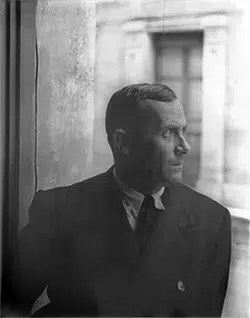
Born on April 20, 1893 in Barcelona, Joan Miró grew up in a family of artisans : his father was a goldsmith and his mother was the daughter of a cabinetmaker. From an early age, Miró showed a keen interest in drawing, but his father opposed this career and encouraged him to study business in order to ” be someone in life “.
After two years working in a colonial commodities store, Miró fell ill and entered a depression. His fragile health led him to abandon the path of commerce to devote himself to his true passion : art.
It was at the Llotja School of Fine Arts and the Gali Academy in Barcelona that he forged his first artistic weapons. Influenced by Fauvism, Cubism, and soon by Surrealism, Miró developed a unique visual language, where primitive forms, bold colors and mysterious symbols intertwine.
His work, deeply rooted in Catalan soil, is distinguished by an overflowing imagination and a pronounced taste for experimentation. Painter, sculptor and ceramist, he is constantly exploring new media and techniques.
In Miró’s footsteps: a journey through Catalonia
To better understand the world of Joan Miró, there’s nothing like a journey through his native Catalonia. A number of emblematic sites allow you to immerse yourself in his life and work, while discovering the cultural and natural riches of the region.
Barcelona: the cradle of art
Barcelona is the first port of call. This is where Miró was born and trained. It’s also where you’ll find the Joan Miró Foundation, on Montjuïc hill. Inaugurated 50 years ago, in 1975, this foundation is one of the most important museums dedicated to the artist.
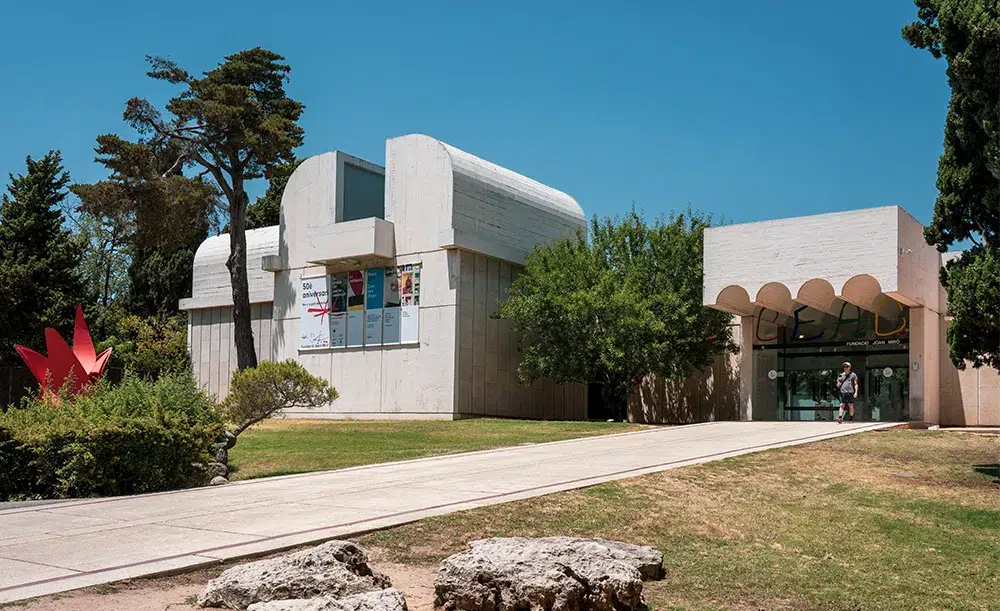
Very attached to his native city, Miró donated several works to Barcelona. The Fundació Miró is his principal gift, since most of the collection was donated by the artist himself.
The building, designed by his friend the architect Josep Lluís Sert, is an architectural masterpiece, bathed in natural light. Hundreds of Miró’s works are on display here, as well as temporary exhibitions of contemporary art. Miró saw the foundation as a book of which he wrote only the first page, leaving young artists the opportunity to write the following ones thanks to the exhibitions regularly organized there, dedicated to young creation.
The terrace also offers panoramic views of the city and features several monumental sculptures.
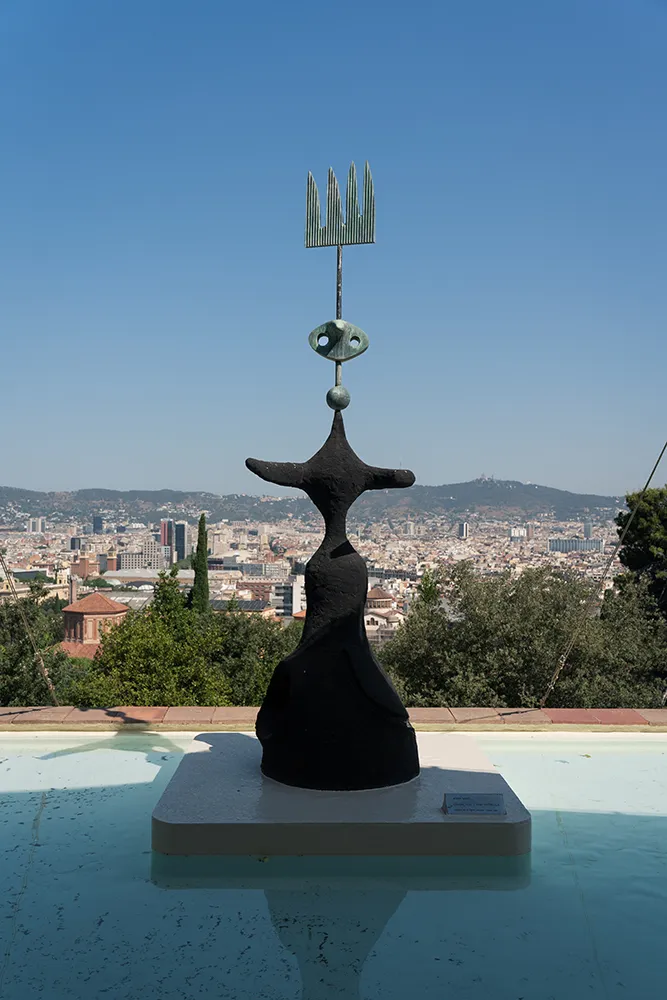
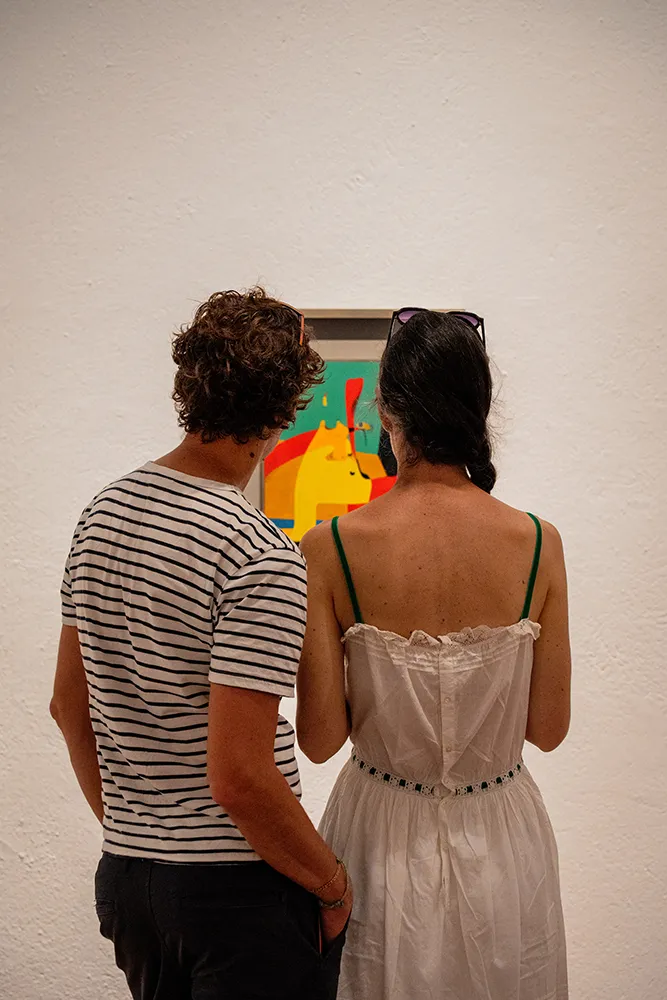

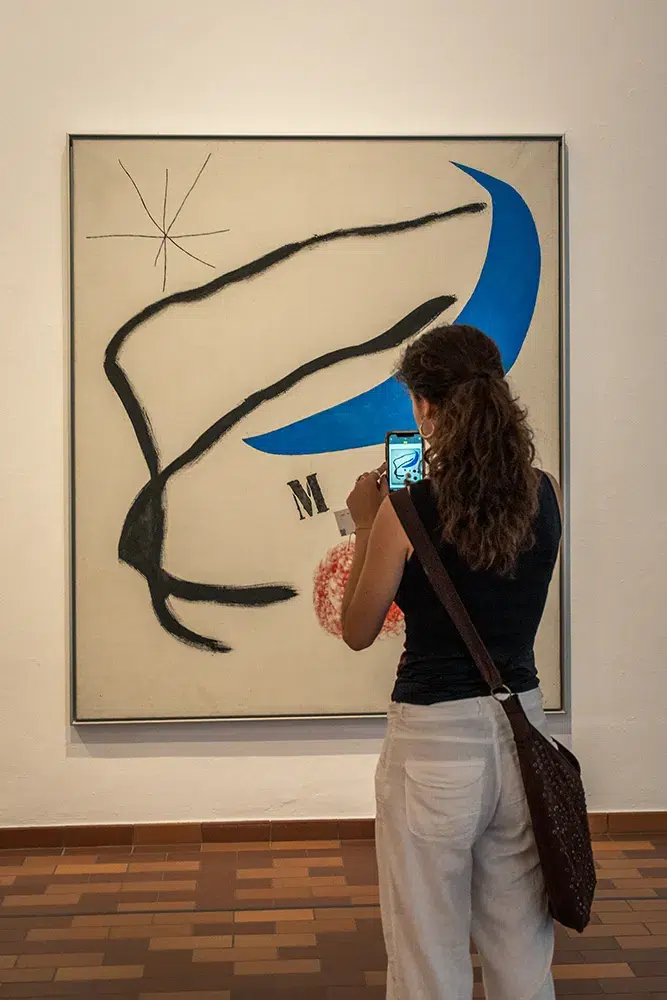
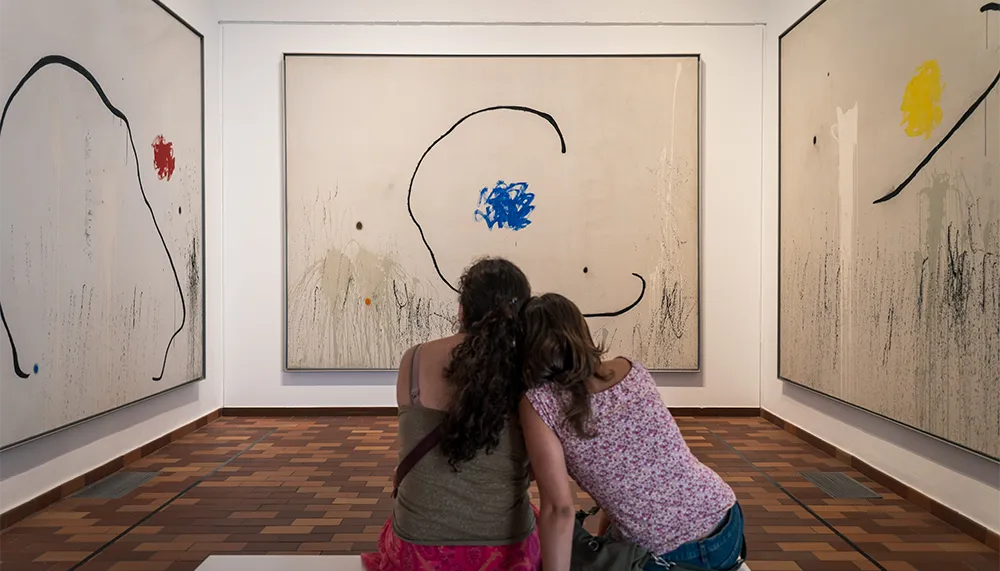
Fundació Joan Miró
Parc de Montjuïc, Barcelona
Tuesdays to Saturdays, 10 am to 7 pm from November to March and 10 am to 8 pm from April to October
Sundays 10 am to 10 am
€15, €9 for students aged 15 to 30, free for children under 14
https: //www. fmirobcn.org/en/
Other places in Barcelona were marked by Miró’s passage. In the city center, at passatge del Crèdit, near the famous Plaça Reial, you can see the painter’s birth house.
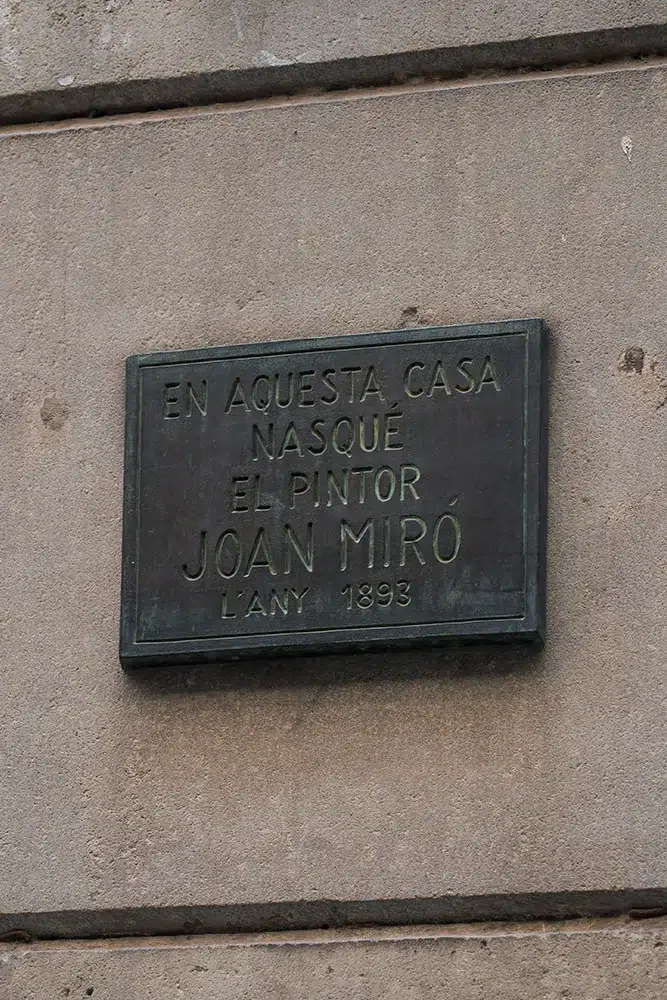
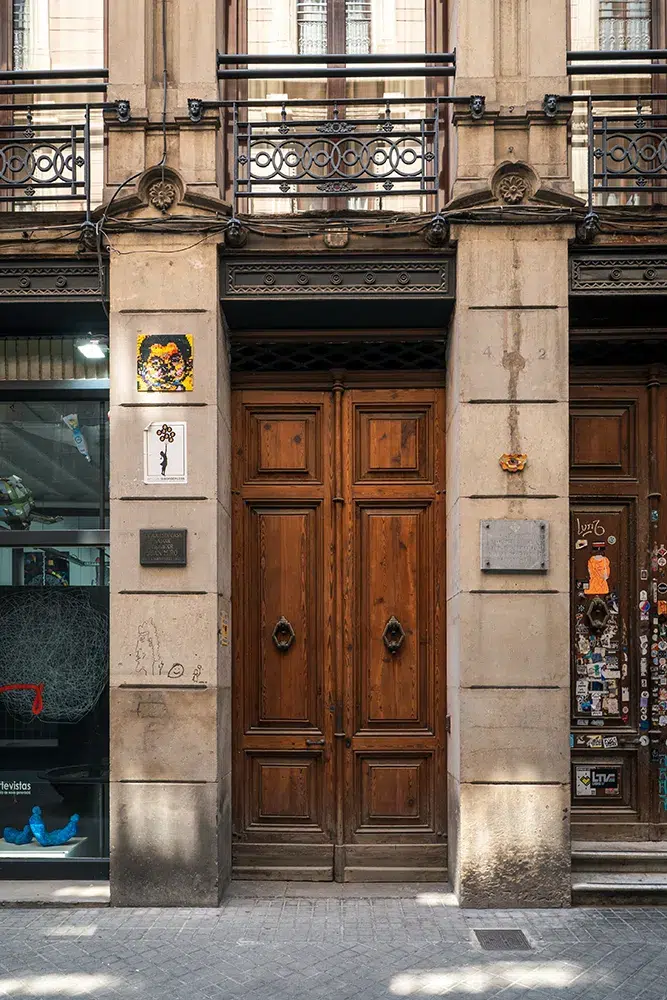
Passatge del Crèdit, Barcelona
Not far from there, on La Rambla, at the Liceu metro station, a mosaic floor was donated to the city by Miró.
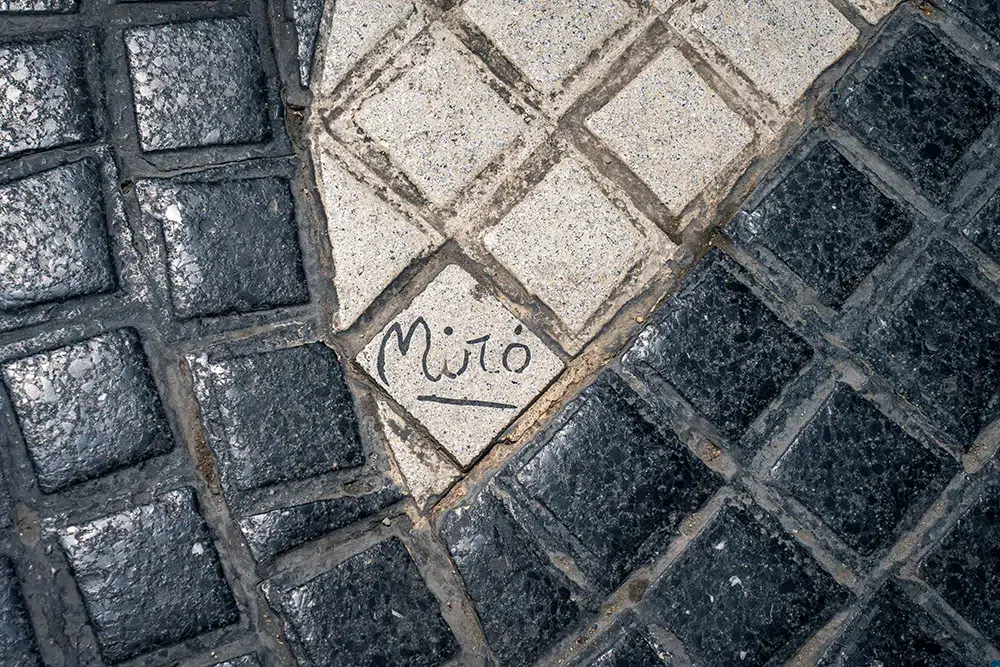
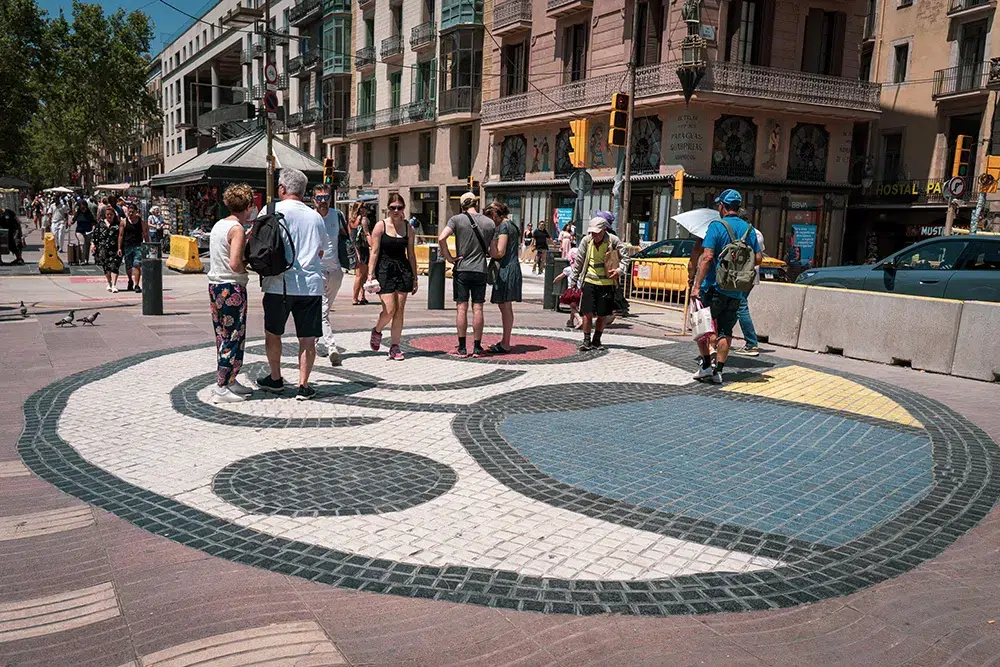
La Rambla, 71, Ciutat Vella, Barcelona
Then in the former Santa Creu hospital, now home to a library, you can see the venue where the first major exhibition devoted to Miró was held in 1968.
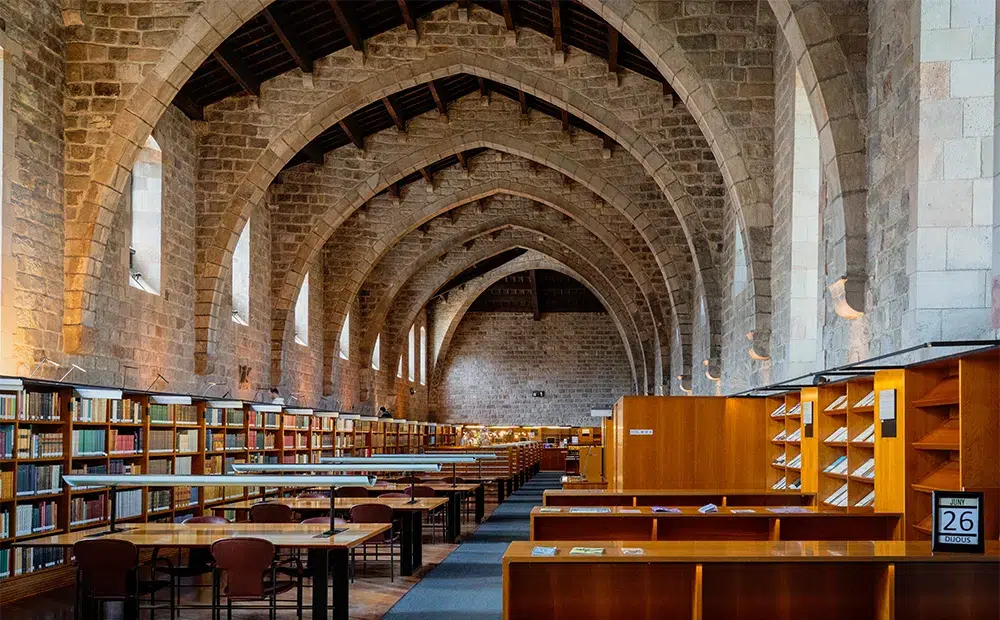
Old Santa Creu Hospital
Carrer Hospital, 56, Barcelona
Good addresses in Barcelona
For accommodation, I recommend the Ibis Styles Barcelona Centre hotel, just a 15-minute walk from the Sagrada Família.
340 Provenca Street
A little more central, the Exe Plaza Catalunya hotel is located, as its name suggests, a stone’s throw from the Plaza de Catalunya and close to the historic center.
Ronda de la Univ., 18
Mont-roig del Camp: The land of origins
Just a hundred kilometers from Barcelona, Mont-roig del Camp, a small farming village, was a place of retreat and inspiration for Miró. If the artist’s paintings are in Barcelona, the painter’s landscapes are here.
At the age of 18, affected by typhus, Miró fell seriously ill. His family sent him to Mont-roig to convalesce. The artist fell in love with the region, returning for several years until 1976.
It was here that he painted some of his most iconic works, such as The Farm (1921-1922), a picture in which he put everything he loved : his wife, animals, trees and the land of Mont-roig.
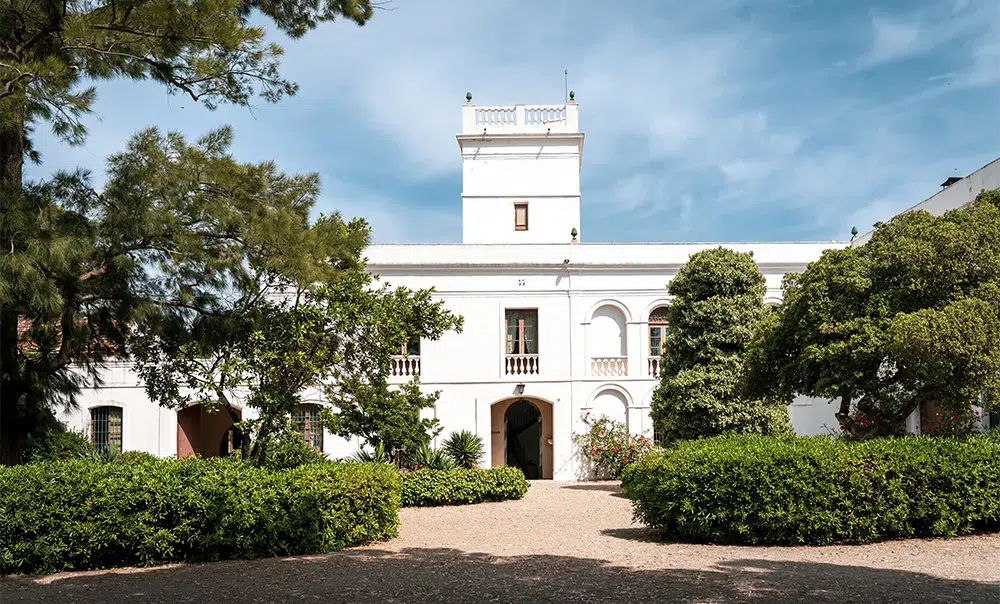
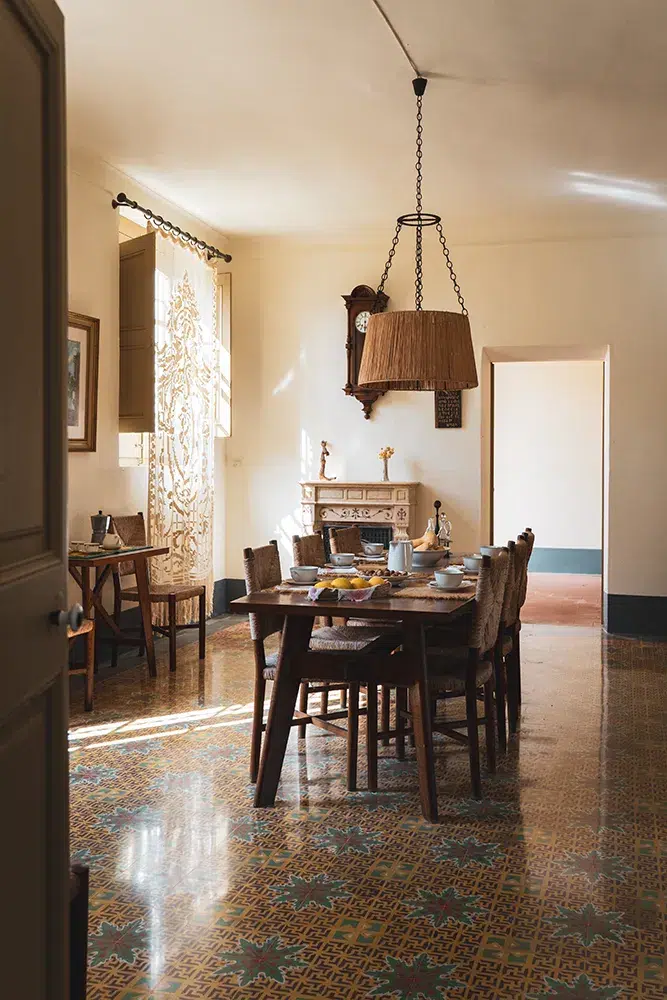
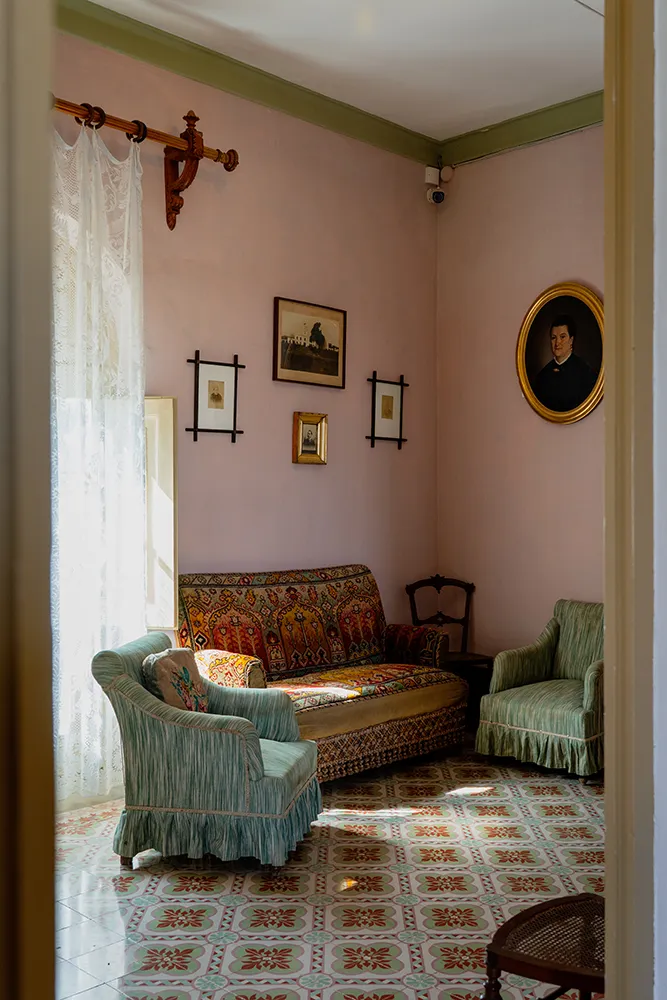
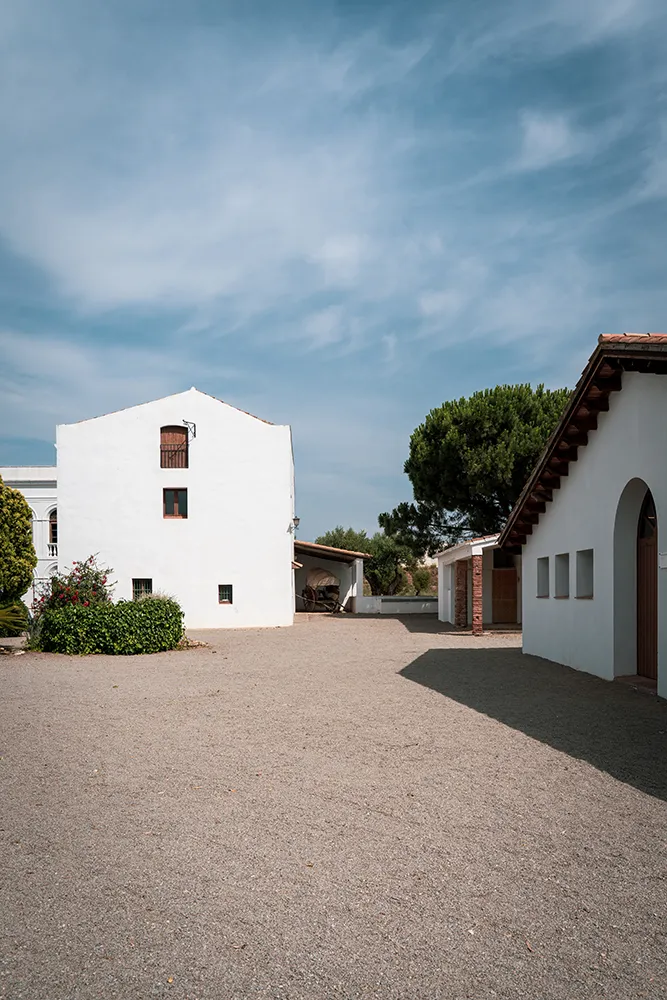
Mont-roig is always in his pocket!
Whenever he traveled, Miró always carried a Mont-roig carob with him, enabling him to carry the strength of his land with him.
This family home, despite its importance, fell into oblivion for almost 40 years and was almost razed to the ground to build a freeway. Saved thanks to the persistence of Miró’s daughter, who managed to have the freeway diverted 25 meters, le mas Miró has been open since 2018 and allows visitors to discover the rural environment that so nourished the artist. The house, restored to its original state, is surrounded by olive trees and fields, and offers an intimate look at the painter’s daily life, of which the highlight is the studio, an extremely touching place that gives the impression that Miró will return at any moment to get back to work.

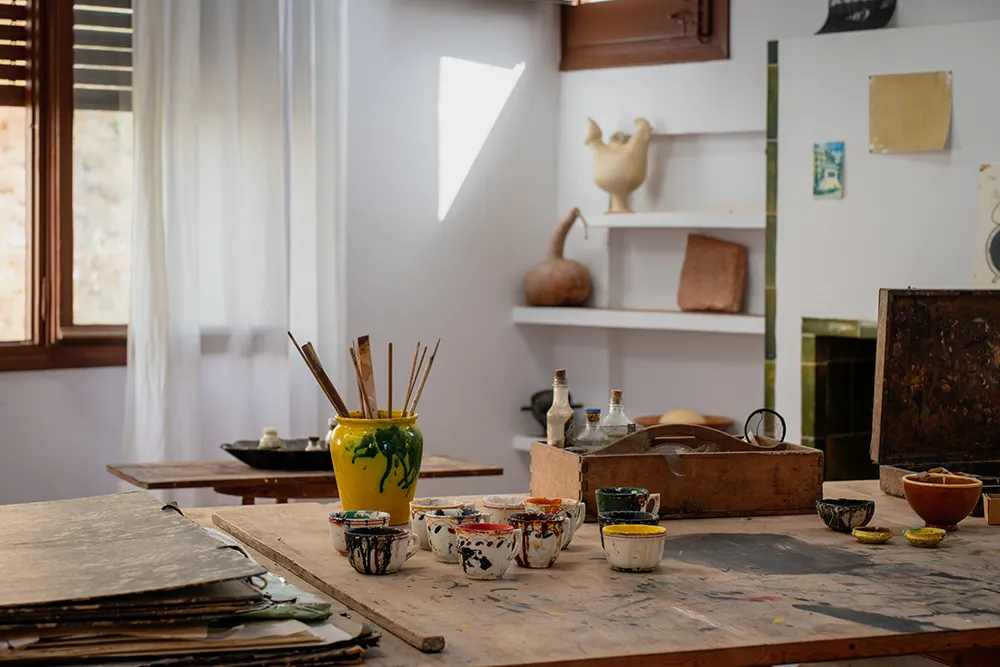
Mont-roig, the red land
Mont-roig means ” Mont-rouge ” because of the ochre color of the earth. If you visit the town, you’ll find the landscapes that inspired Miró and, in some of the stones, the red color of the region.
This is also particularly evident at the Mare de Déu de la Roca hermitage, another place immortalized by Miró. This impressive and magnificent monastery perched on a mountain also offers a magnificent view of the surrounding area.
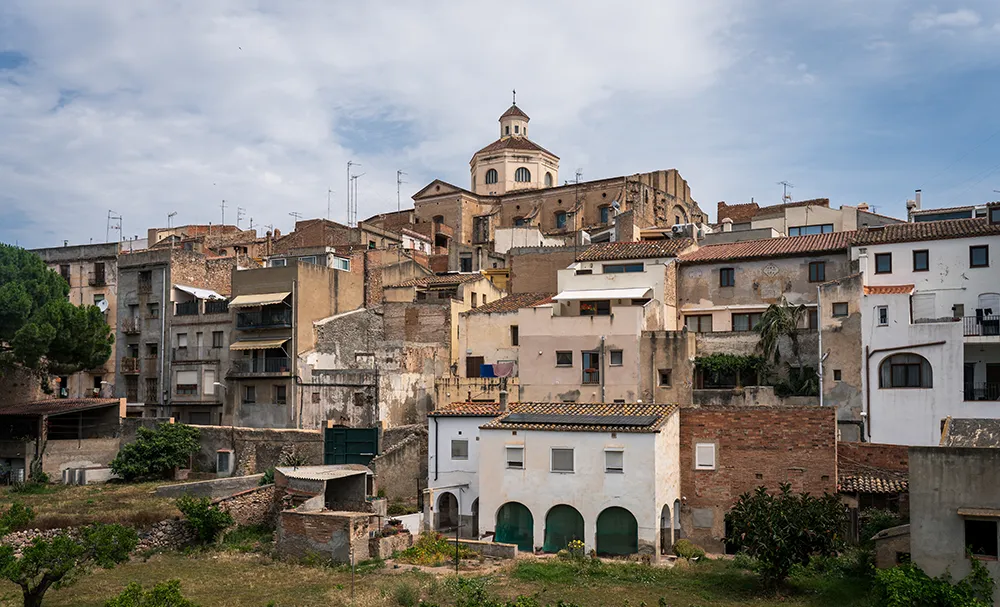
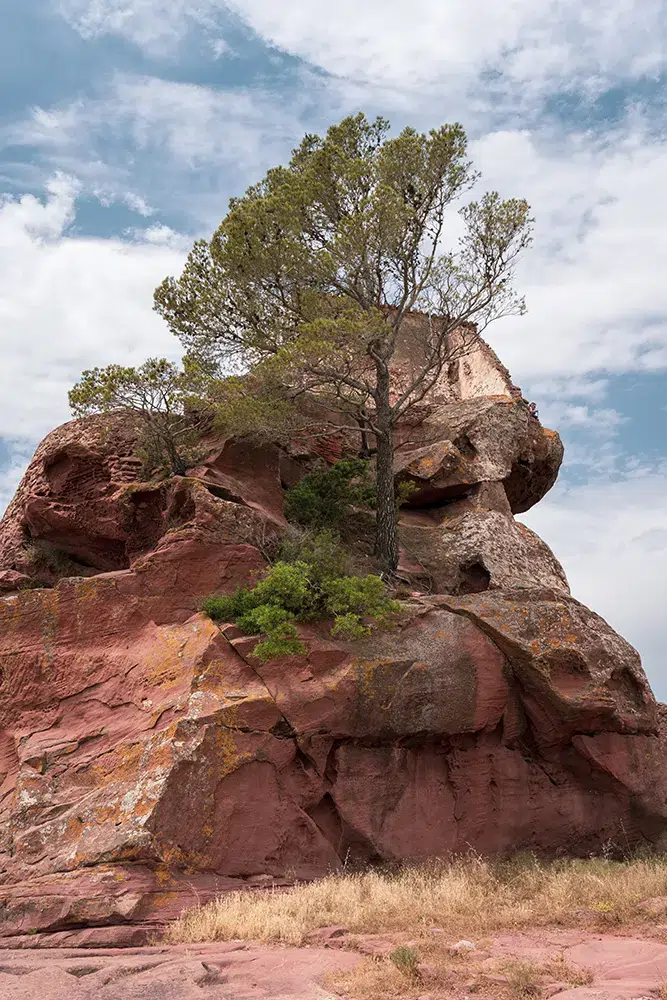

A trip to Reus
A few kilometers from Mont-roig you’ll find the town of Reus. Known as the birthplace of Gaudí and for its Modernist architecture, Reus also has a small connection with Miró.
The artist, who paid great attention to his clothing style, bought his suits here, at Queralt, whose boutique, although housing a new brand, is still visible.
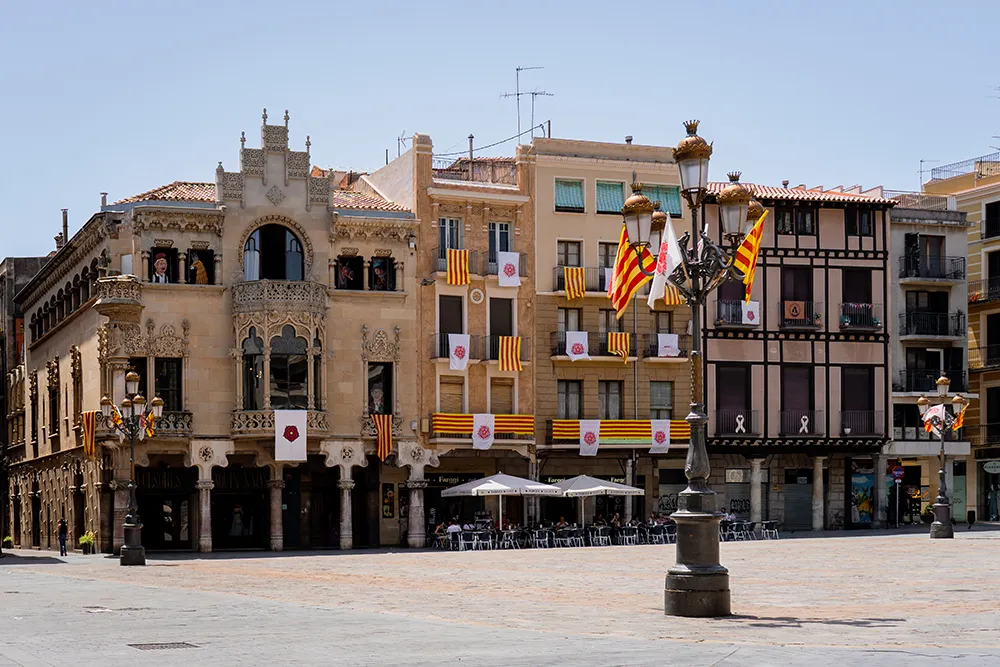
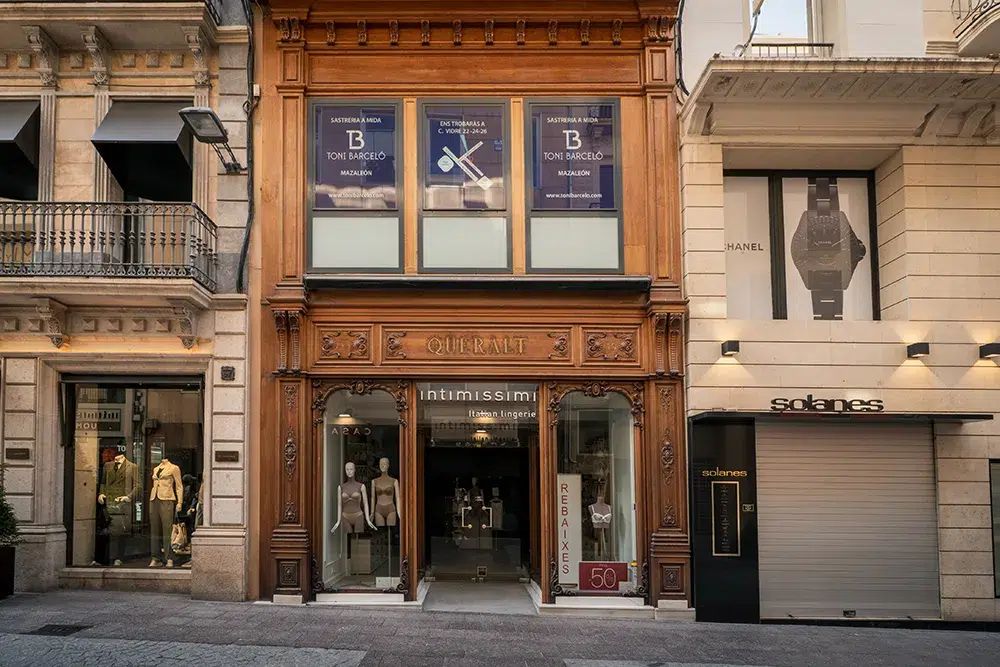
Follow in Gaudí’s footsteps
Gaudí, the famous architect of the Sagrada Família, Parc Güell and Casa Batlló, was born in Reus on June 25, 1852. The city pays homage to the native son with the Gaudí Centre.
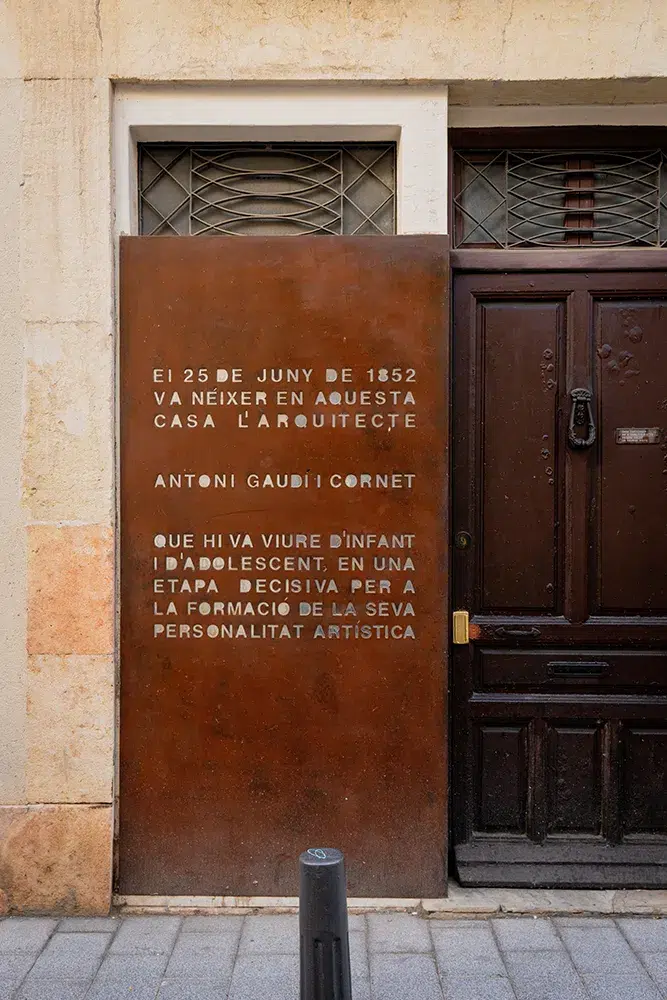
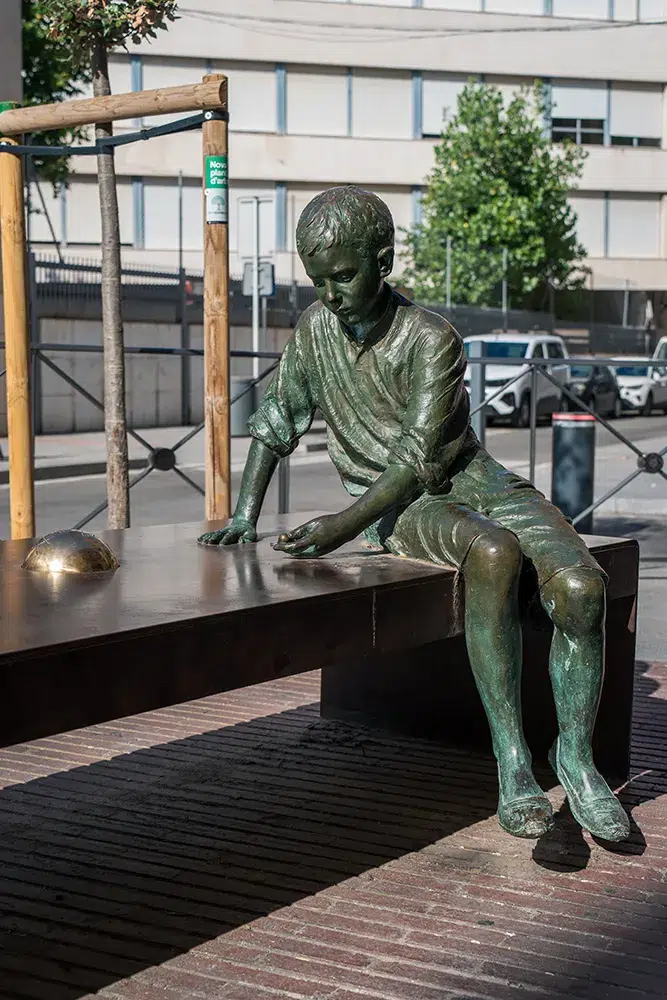
Good addresses in Reus
To sleep: Hotel Centre Reus is ideally located, just a stone’s throw from the main square. Some rooms offer a lovely view of the church.
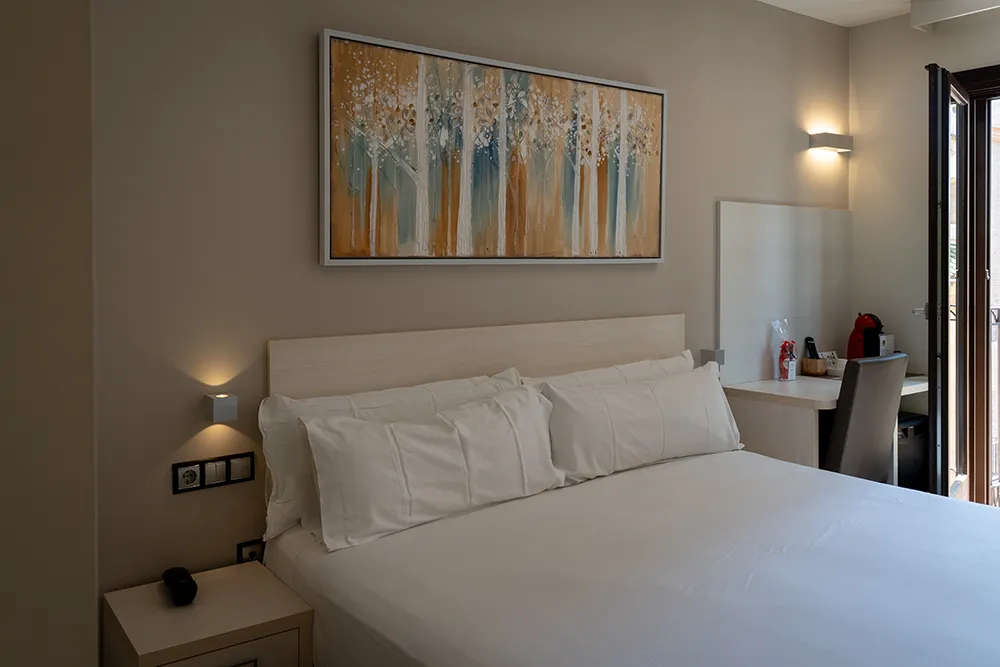
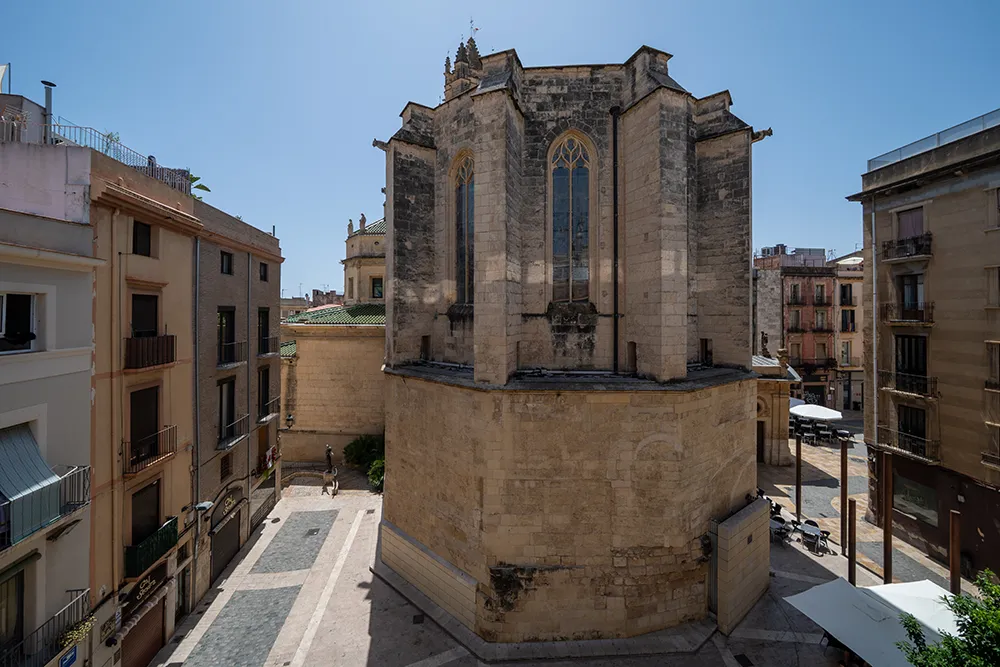
Carrer de l’Hospital, 6, 8
https://hotelcentrereus.com/en/
Food and drink: our favorite is the Restaurant Museu del Vermut (Vermut museum-restaurant), where you can enjoy a glass of Vermut, the local specialty (in moderation!), as well as tasty modern Catalan cuisine.
Carrer de Vallroquetes
https://www.museudelvermut.com/

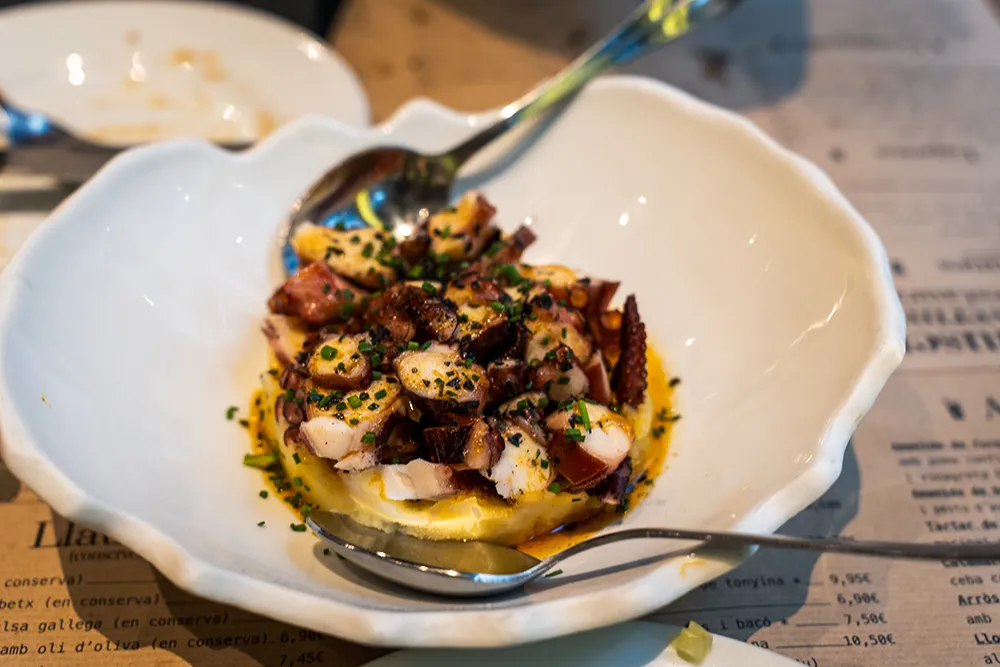
Interactive map
This map shows all the addresses mentioned in this article:
Practical information to prepare your trip
How to get there? Start your stay in Barcelona. The city is easily accessible by plain or by train from Paris in less than 7 hours.
How to get around? In Barcelona, several bus lines will get you around the city; all you need is a bank card to pay for your ride on the bus. To get to Reus or Mas Miró, you’ll need to rent a car.
How much time should you allow? Allow 3 days to do the visits mentioned in this article, but you can take advantage of it to extend your stay in the region and better discover Barcelona, but also Reus, Montblanc and Tarragona.
Died in 1983 at the age of 90, Miró left us a legacy of vivid colors, free forms and the Catalan landscapes he loved so much.
To travel in Miró’s footsteps is to discover a land of emotions and an invitation to see the world through the artist’s eyes. There’s no doubt that after taking this journey, you’ll never look at Miró’s works in the same way again !
Article produced in collaboration with the Tourist Office of Catalonia.

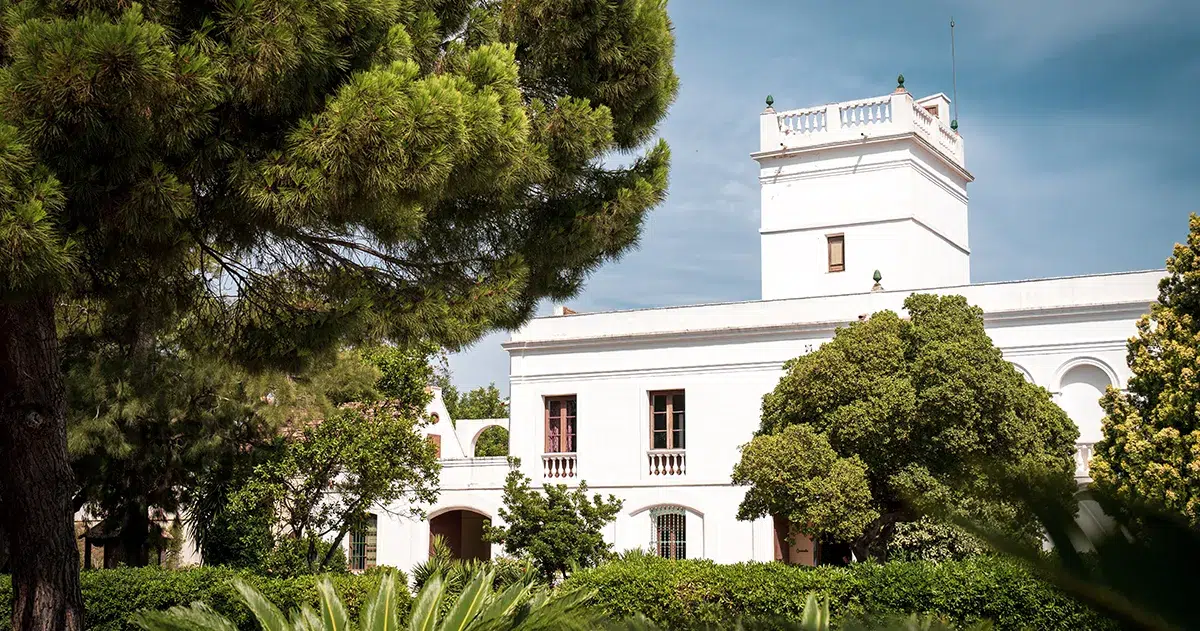



No Comments
Leave a comment Cancel